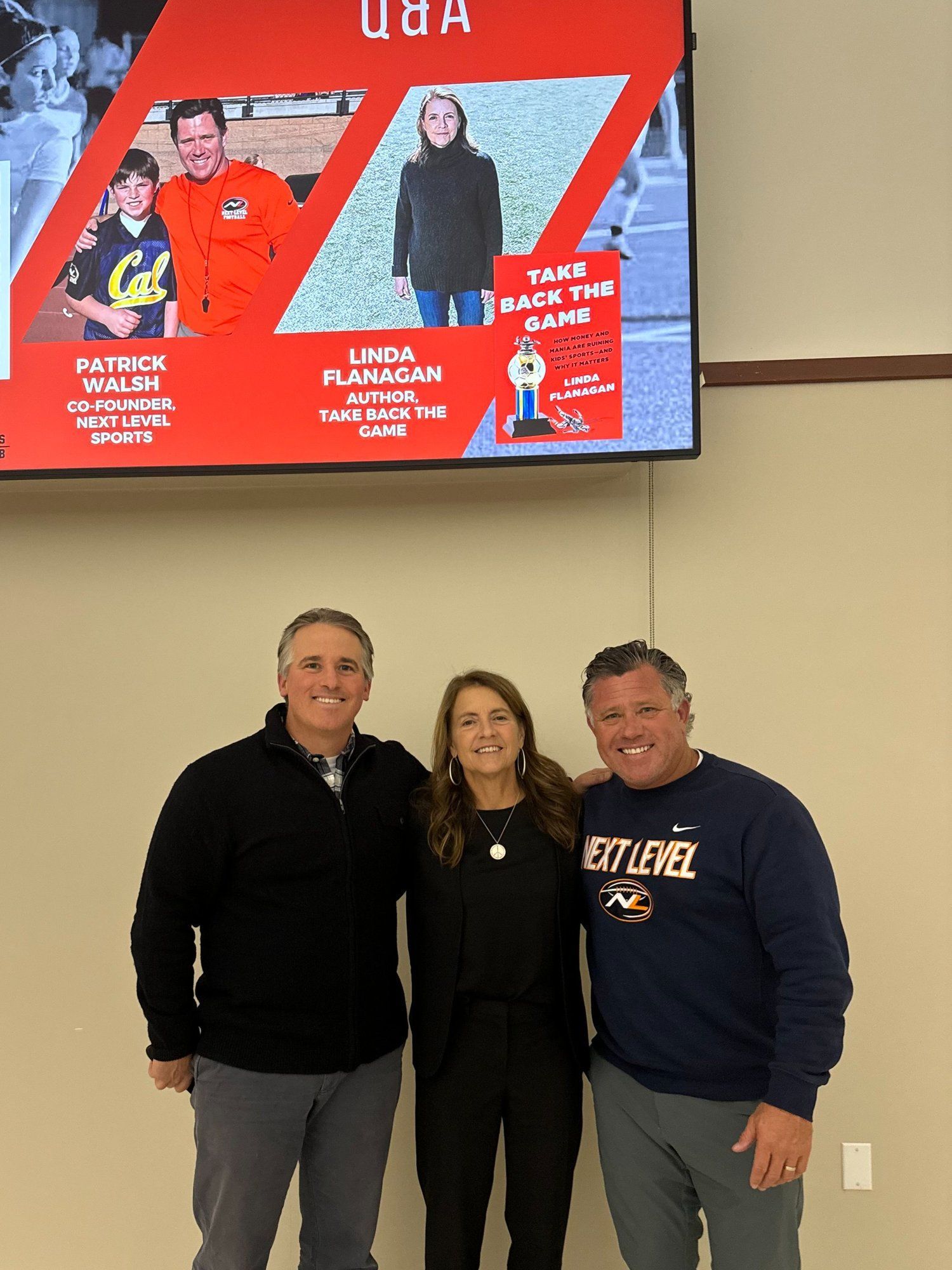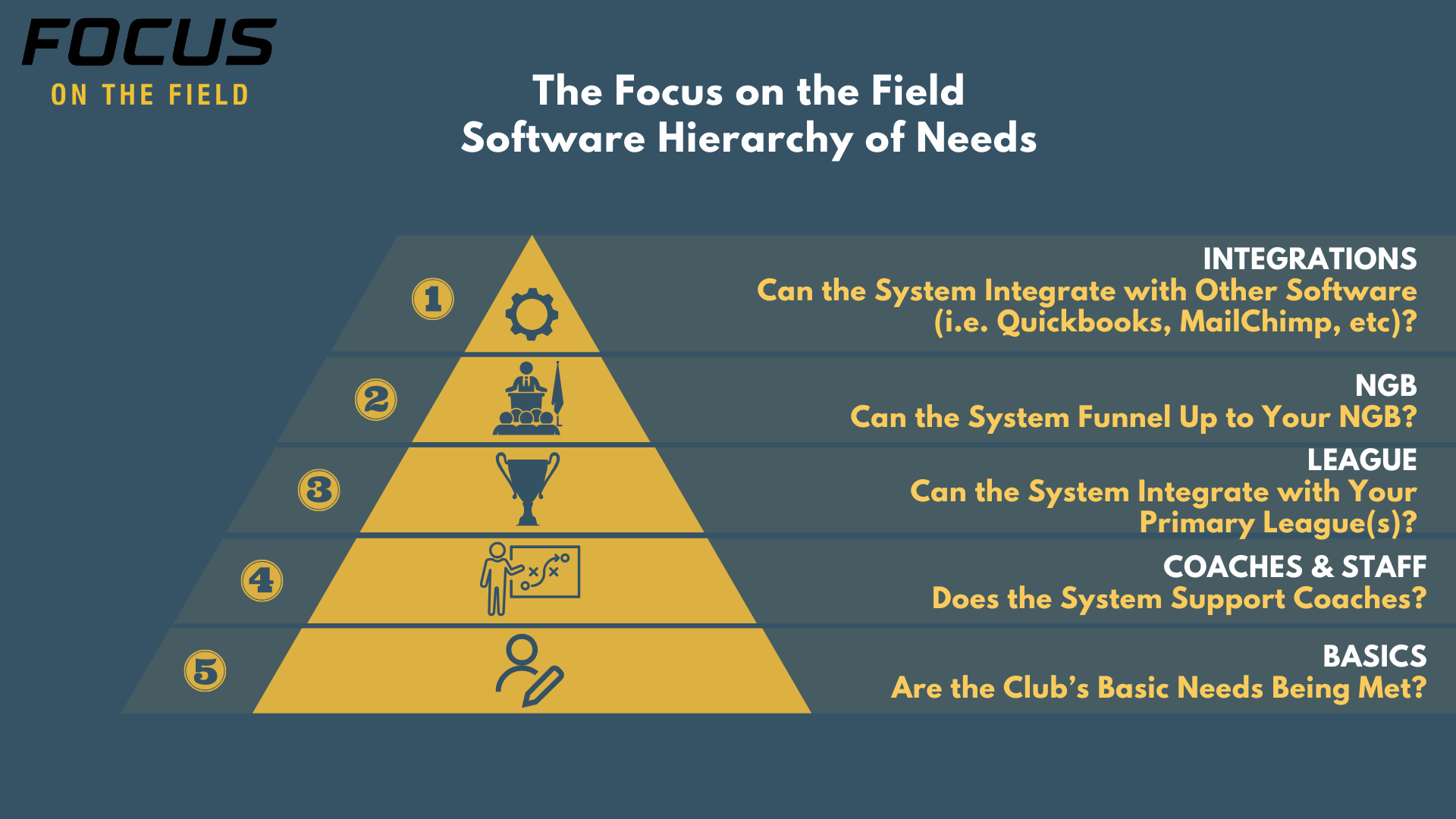A note to sports….Is this really helping? Are we taking back the game?

Dear Sports Community,
This past November, right before Thanksgiving, I was fortunate to give a presentation on the state of youth sports with Take Back The Game author Linda Flanagan and Next Level Sports Co-Founder Patrick Walsh . We gave the presentation at my oldest son’s school, St. Charles School of San Carlos, California, on behalf of the St. Charles Men's Club. It was a bit of a passion project for all three of us as each of us have been looking at what’s been happening in youth sports and have been trying to provide solutions to a rapidly changing landscape.
For Patrick and I, it was also an opportunity to assess how and if our respective businesses are holding true to our ideals and making a positive impact in a field we both care deeply about.
As Linda diagnosed in her book, "Take Back The Game: How Money and Mania Are Ruining Kids' Sports—and Why It Matters” , the state of youth sports has evolved significantly over the past few years, with some positive developments but even greater challenges. The impact of commercialization and the obsession with competition on the youth sports industry has detracted from the core values of play, fun, and personal growth. After reading the book it’s easy to see how the influx of money and professionalization have further skewed youth sports values leading to burnout, exclusion and less kids playing.
When I started Focus On The Field, the mission was to alleviate one of the challenges Linda diagnosed; the increased off-field administrative burden and expectations of coaches, directors, and volunteers, caused by the increased professionalization of youth sports programs. Five years in, it’s fair to ask if we are making a meaningful impact on the state of youth sports? Or contributing to the mania?
From the feedback we've received from our clients, the answer appears to be a resounding yes in terms of making a positive impact. Coaches and directors consistently report that our services have significantly reduced their administrative workload, allowing them to spend more time on the field with their players. This increased focus on coaching and mentoring has led to more engaged and motivated athletes, which is a crucial factor in the overall health of youth sports programs.
Moreover, by taking on the administrative burden, we helped prevent burnout among volunteers and coaches. Burnout is a significant issue in youth sports, leading to high turnover rates and a lack of continuity that can negatively impact young athletes. Our clients have shared that by reducing the administrative load, we’ve helped lower the barriers to entry for new programs and initiatives and increased accessibility. Our combined efforts have led to the creation of 3 new, community based leagues and helped revive 3 additional leagues that were close to closing down.
This feedback is right in line with our goal of freeing up coaches, directors, and volunteers to focus on what truly matters: providing a positive and enriching experience for young athletes.
The story of Next Level Sports exemplifies the potential of keeping sports local and accessible while also being professionally run. Over the past decade, Next Level Sports has grown tremendously by focusing on community-based programs that prioritize accessibility and local engagement. Patrick Walsh and his co-founder Lance Smith have proven there is a desire and market for local, accessible sports programs, yet it also highlights the importance of balancing professional management with the core values of youth sports.
Next Level Sports has successfully created a business that thrives on community involvement and local impact, illustrating that profitability and positive community outcomes are not mutually exclusive.
Yet despite the positive feedback and tangible improvements Patrick and I have each respectively witnessed with our businesses, we still asked ourselves, and Linda: Are we contributing to the stress? Are we just spurring on the professionalization of youth activities? Are we part of the solution or just continuing the problem.
For anyone involved in youth sports it’s a question you must keep asking, especially as you reflect on the state of youth sports and your role within it. I can say with confidence that Focus On The Field and Next Level are proud of the impact we have made so far. The positive feedback from our respective clients and the tangible improvements in their programs and communities affirm that we are on the right track.
However, we and everyone else involved must remain committed to continually assessing and improving to better serve our ultimate goal: to ensure that every child has the opportunity to thrive on the field, supported by a dedicated and well-equipped team of coaches, directors, and volunteers.
Until then, keep taking back the game.
Best,
Tyler











